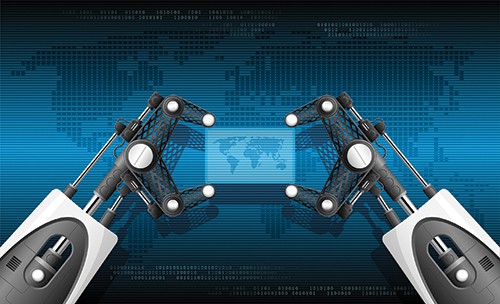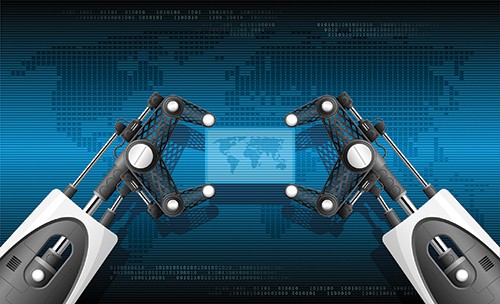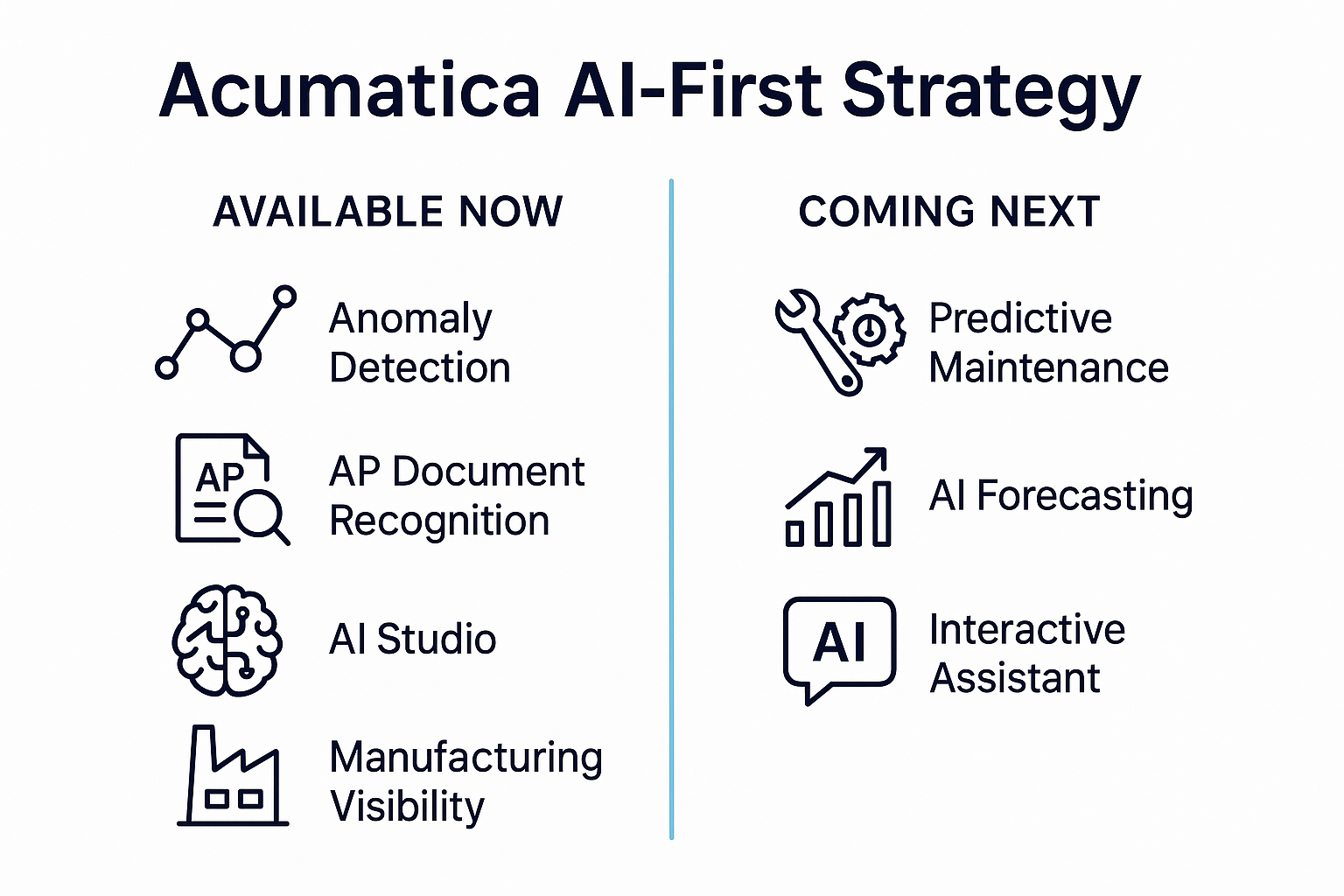Solve Key Supply Chain Management Challenges with Acumatica 2025 R2
Revolutionizing Supply Chain Management with AI Technology Across Western Canada, supply chains are still feeling the pressure. From unpredictable...
4 min read
 Murray Quibell
Jan 28, 2018 12:47:26 AM
Murray Quibell
Jan 28, 2018 12:47:26 AM


In their simplest forms, digitization and automation applications apply to the business world in this way:
These two concepts can work alone or in tandem to save time, reduce human errors, improve safety, and perform tasks more quickly and less expensively than human labor.
The impact of digitization and automation in the supply chain has been wide-reaching, and we have seen their spread among industries over the past forty years, to the point that there are very few industries that have remained untouched by Big Data and the Internet.
For many businesses, particularly those with a strategic supply chain management component, this has been both beneficial and overwhelming.
This technological revolution has created a data-producing nightmare. The amount of information being generated by all sources is estimated to be 2.5 quintillion bytes of data per day, and it shows no signs of slowing.
How are businesses tapping into that data to digitize and automate their supply chain management without overwhelming operations?
Almost every aspect of SCM is being impacted by either automation or digitization or both.
Sometimes it produces game-change results (see ‘Benefits of Digitization’ below), and sometimes it’s more subtle, such as reducing fleet accident rates (see ‘Transportation automation’)..
Bentek Systems, an industrial wireless SCADA and telemetry solutions manufacturer, and a client of Aqurus Solutions, was using multiple systems to track product planning, manufacturing, shipping, accounting, and inventory.
They were generating reams of data, but its fractured nature prevented them from doing anything meaningful with it.
Bentek Systems combined 6 SCM systems into a single solution, reducing their labour component by over 100 hours per week, and permanently saving them almost $85,000 per year.
Once Bentek implemented a system that collated all of that data in one location so it could be used effectively, they were able to combine multiple SCM systems into one, and they reduced their labor requirement by 100 hours per week, saving them almost $85,000 per year.
It seems that everywhere we turn, there is news about self-driving cars.
While many are in denial that this technology will replace human drivers anytime soon, many transportation companies and 3PLs are taking advantage of automation to improve their own vehicle’s safety and performance, particularly on class 8 trucks.
Cruise control and automatic braking, lane departure alerts, detection sensors, and systems that communicate back to HQ if a truck needs maintenance aren’t science fiction anymore, and many fleets are demanding them on new vehicles.
This is having a positive effect on fleet safety records, and although large trucks are traveling more miles they are getting into fatal accidents at a slower pace, according to a recent report from the American Trucking Associations.
In fact, the rate of deadly crashes per 100 million vehicle miles traveled sank 42.2 percent between 2000 and 2013 to the fifth lowest level in history.
The effect on driver and other vehicle safety has been so positive, the Alliance for Driver Safety & Security (aka The Trucking Alliance) has made it mandatory to implement safety automation systems to qualify for membership.
Information about traffic, potential weather problems, changing regulations between jurisdictions, and even fuel price variability are all being captured by multiple parties through the Internet of Things, or IoT.
Distilling this information and delivering to drivers as they move goods around the country or the world can improve driving conditions, improve safety, prevent legal issues, and decrease overall shipping times.
Upper Lakes Foods, a food distributor out of Minnesota, implemented an electronic logging system that allows drivers to use their mobile devices to send maintenance logs directly to HQ.
The maintenance team can then schedule repairs or parts replacements for the next time the truck is docked at their garage and this is having a positive effect on their vehicle uptime rates.
As links up and down the supply chain branch out across the globe, keeping tabs on them (and any associated tariffs, regulations, and other costs) becomes increasingly difficult.
Digitization has a lot to contribute to this effort as well. Using the IoT to communicate around the world is a must-have.
The ability to track what’s coming from where and what’s going where have never been more important to the health of the logistics companies involved.
Aimtec, a manufacturing company with distribution centers in Canada and Asia, was struggling to reconcile accounting files in different currencies.
Aimtec implemented a system that not only standardized accounting processes, but also made that data accessible from a cloud-based platform that was easily available to anyone with an internet connection.
Before, they had relied on a more-complicated process using VPN, which was slower and not as reliable.
Using a single accounting system that could handle multiple currencies and keep track of requirements for shipping from different international ports, they have improved their lead time, and customer service levels, and grown business at a rate that was previously impossible.
There is no doubt that automation and digitization are changing the world we live in today and will continue to do so for the foreseeable future.
“The next several years will bring about the “great digitization” of industry… it is indeed real. And, while it will surely take many years to be fully realized, the “great digitization” is already happening faster than many might expect.”
Supply Chain Management Review”, September 1st, 2017
There are many obstacles that will have to be navigated in order to digitally transform your supply chain, including:
And there are many others.
But the fact remains: this is a major change being thrust upon us, and the winners will be the organizations and adapt, adopt, and take advantage of the situation, even when the way ahead is not crystal clear. History is filled with examples of organizations that didn’t follow this advice.
However, none of this precludes the fact that digitization and automation will impact us all in the future.
Article #1: Blockchain is Becoming a Crucial Link in the Supply Chain
Article #2: Automation and Digitization Will Shorten the Supply Chain
Article#3: Shipper-3PL Relationships Will Share Information at a Strategic Level
Article #4: Logistics is Experiencing a Talent Revolution
Article #5: 3D Printing will Add Strategic Flexibility to the Supply Chain – but When?

Revolutionizing Supply Chain Management with AI Technology Across Western Canada, supply chains are still feeling the pressure. From unpredictable...

Acumatica Integrates Specialized Produce Sales Software, Saves Produce Broker Time and Money
Distributors of any size face many of the same global challenges, including rapidly changing customer demands, complex product inventories, and...